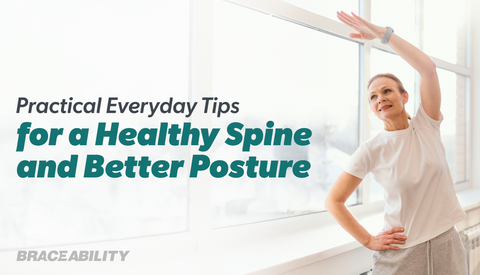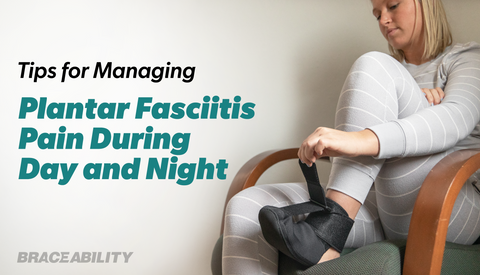Conflicted About Prolapse Surgery?
With one in five women being affected by pelvic organ prolapse, it is disappointing we aren’t talking about it more. Pelvic organ prolapse (POP) occurs when organs like the bladder, uterus, or rectum fall out of place by shifting down. It can be quite a shocking experience and a quick fix is typically desired. Prolapsed uterus and prolapsed bladder are the most common forms. There are many surgical and non-surgical treatment options out there, so making a decision between the two can be a big challenge. A life-altering choice like prolapse surgery is not something to take lightly.
While you might wish for an instant solution to this common condition, it is important for you to take the time to understand the pros and cons of pelvic organ prolapse surgery and make the right choice for YOU! And, as always, we strongly encourage you to speak to a medical professional for guidance.
Before diving into the benefits and risks of pelvic floor repair surgery, first, you should understand the seven forms of surgical treatments.
7 Types of Surgery for Uterine and Bladder Prolapse
-
Vaginal Vault Prolapse Surgery
-
Rectocele Surgery
-
Enterocele Surgery
-
Cystocele Surgery
-
Urethrocele Surgery
-
Vaginal Obliteration
-
Hysterectomy
The goal of vaginal vault surgery is to repair the vaginal wall when the upper portion of the vagina loses the normal shape and drops down into the vaginal canal, and possibly protrudes out the vagina. The repair is most often done through the vagina or a small incision in the abdomen.
Rectocele surgery is the repair of the rectum and bulging of the bottom wall of the vagina. The surgery is typically done through the vagina, but in some circumstances a combined abdominal and vaginal approach to the repair is necessary.
Repair to the small intestine is completed during enterocele surgery. Your surgeon will perform the procedure through the vagina or abdomen. They will move the prolapsed small bowel back in place and tighten the connective tissue of the pelvic floor.
A cystocele repair is a surgery to put your bladder back in its normal position. Your surgeon will fix the wall between your vagina and bladder to keep your bladder from shifting again.
The urethra is repaired in urethrocele surgery by removing the tissue that is no longer functional and restoring strength in your urethra. The surgery is performed through either the vagina or abdomen.
Most of the vaginal lining is removed and the vagina is sewn shut during a vaginal obliteration. This surgery is only an option if you no longer want to have sexual intercourse.
During a hysterectomy, a complete or partial removal of the uterus takes place. You will no longer have a period cycle or be able to get pregnant following hysterectomy surgery. In some cases, bladder prolapse after hysterectomy surgery can occur.
Life After Prolapse Surgery
Following any of these surgeries, you will likely need to stay in the hospital overnight or longer depending on how your surgery goes. Your doctor will want to confirm that you can release your bladder voluntarily and completely before confidently sending you on your way.
In the healing process, your body will be adjusting to it’s new normal, so be patient and take it easy during healing. Over the counter pain medication can help ease any discomfort you may have. Wear loose clothing to avoid added pressure on your abdomen, use sanitary pads for any bleeding, keep your pelvic area clean by showering daily (avoid baths), and rest when you need to. Do not push yourself too hard during the initial recovery stage to set yourself up for a successful recovery.
With prolapse surgery, it is especially important to avoid the common post surgery symptom of constipation. Extra strain when you try to empty your bowels, can put pressure on your pelvic area and interfere with the healing process. Drink plenty of water and incorporate lots of fruits and vegetables into your diet.
The Pros and Cons of Pelvic Prolapse Surgery
Along with your own research of surgical and nonsurgical treatments for pelvic prolapse, you should always consult with your doctor. Surgery is not always the best option for women, and there are great surgery alternatives out there. Take your time to understand the pros and cons of both routes.
Pros of Pelvic Floor Repair Surgery
Going through with prolapse surgery means the placement of your pelvic organs can improve, resulting in reduced or complete elimination of symptoms. Not to mention, the ability to enjoy life to the fullest once again. These are some major perks that may make the risk of surgery sound worth it for you.
-
High Success Rate for Prolapse Surgery
In regards to overall surgical success for prolapse, 94% of women experience a complete absence of prolapse following repair. Some will experience a recurrent prolapse, others will still have some bulge, every woman's body reacts to surgery differently.
Cons of Surgery for Fixing Pelvic Organ Prolapse
Surgery in general can be a scary thing, but while prolapse isn’t life or death, it can be a struggle to enjoy daily activities when you are dealing with something like prolapse. It is totally understandable that you might be considering surgery. But, it is always worth exploring the downsides to a major operation, like such.
Prolapse surgery comes with the same negatives and risks associated with all surgeries including bleeding, infection, and blood clots, as well as the chance of prolapse return and potential complications.
-
Prolapse Surgery Recovery Time
Not sure what to expect after prolapse surgery? Post-prolapse surgery may look different for everyone depending on the surgery you receive and the stage of prolapse you experienced, so always take your healthcare provider's advice. On average, women need 4-6 weeks to fully recover from POP surgery. This means time off from work with very little movement, lifting, or strain. The first week will likely be the worst and you should begin to feel better with time. Some describe the healing pains as something similar to period cramps.
-
Possible Prolapse Surgery Complications and Risks
-
Possible pelvic pain in the recovery stage and beyond
-
Can create pain during sex
-
Trouble controlling your urge to urinate following surgery
-
Younger women and those with more advanced prolapse are more likely to re-experience pelvic prolapse
-
Relapse of prolapse leading to more surgery
4 Non-Surgical Prolapse Solutions To Try When Kegels Are Not Enough
Maybe you’d like to get pregnant in the future or have other underlying health concerns where surgery is not the best choice for you. Well, the good news is there are several effective non-surgical prolapse treatment options that work for women everyday.
-
The Pelvic Pro Support Belt for Prolapse Treatment
-
Vaginal Pessary Device
-
Women’s Pelvic Floor Exercises
-
Maintain a Healthy Lifestyle
If you wish to opt out of surgery and would prefer a more natural prolapse treatment option, women from all over the world are finding relief with our Pelvic Pro prolapse support belt. This is a comfortable brace that can be worn under your clothes and stay hidden from anyone noticing. Give our pelvic belt a try before choosing surgery and join other women in finding relief today!
A popular recommendation from doctors is a vaginal pessary. A pessary is a removable device made from rubber or silicone that is placed in the vagina to hold the fallen organs in place. This is common among women with mild to moderate prolapse. If you are one that does not want surgery, or cannot have surgery, this may be a good option for you.
The purpose behind pelvic floor muscle exercises is to help strengthen the muscles of the pelvis and vagina. Kegels are an exercise in which you tighten and release your pelvic floor muscles. This can help ease pain and discomfort that comes with pelvic prolapse. Keep in mind that your doctor may recommend different exercises based on your prolapse. For example, squats, bridges, and yoga can be just as effective as kegel exercises for some women!
The best thing you can do to prevent, treat or even reduce your chances of prolapse is to practice healthy habits every day. This means maintaining a healthy weight, reducing the intake of processed foods, increasing your fiber intake, exercising, getting proper sleep and avoiding smoking. It seems like a no-brainer, but these are important key practices to optimizing your body's overall health.











